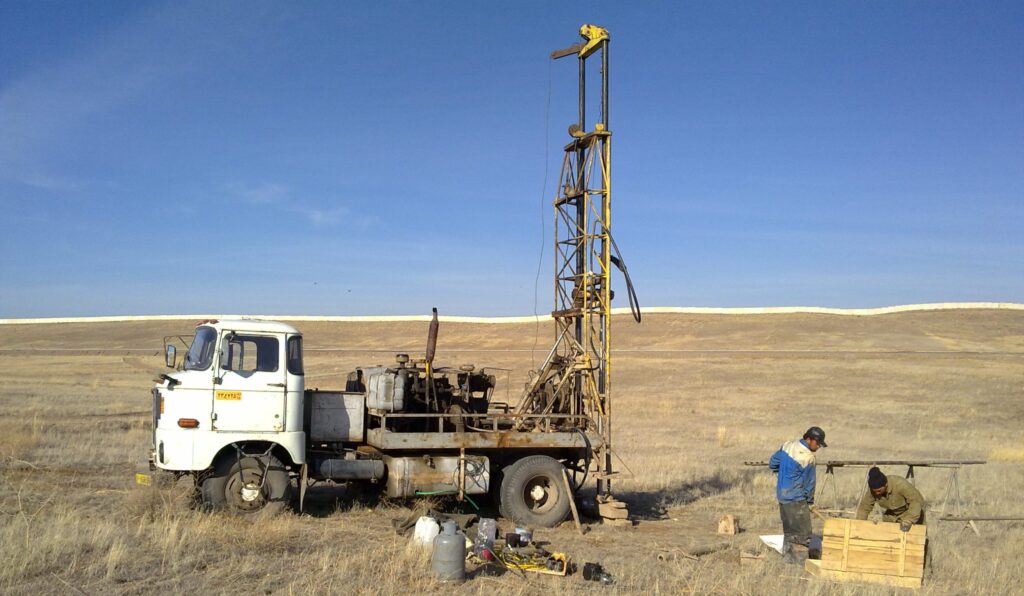Geotechnical Study Services

Arman Sanat Tadbir Andish Laboratory Complex consists of several sections, generally categorized into the Concrete and Building Materials Laboratory, Soil Mechanics and Geotechnical Laboratory, Materials and Metallurgy Laboratory, Asphalt Laboratory, and more. In this section, we introduce the geotechnical services.
Geotechnical Engineering and Consulting Services
Geotechnical engineering and consulting services involve providing expert advice and engineering support in the analysis and design of projects related to soil and rock. These services aim to manage risks associated with the geotechnical properties of the ground and their impacts on structures and facilities.
Interpretation of Soil Mechanics Test Results
Interpretation of soil mechanics test results is a crucial step in geotechnical engineering and the design of earth structures. The results provide engineers with essential information used for analysis, design, and execution of various projects.
Classification and Description of Soil Layer Characteristics
Classification and description of soil layers is an important step in engineering geology, used in the analysis and design of various engineering projects, including structures, roads, bridges, and tunnels. In this process, the ground is divided into different layers, and the characteristics of each layer—such as soil type, density, moisture content, chemical composition, and more—are described.
Determination of Soil Bearing Capacity Based on Shear Strength and Settlement Considerations
Determining the soil bearing capacity based on shear strength and settlement considerations is a key step in the design and construction of earth structures. This process is carried out using geotechnical engineering principles and past experience.
Determination of Groundwater Table Characteristics
Determining the characteristics of the groundwater table is of great importance in geotechnical and earth engineering studies. These characteristics directly or indirectly have a significant impact on the behavior of soils and structures that interact with water.
Determination of Subgrade Reaction Coefficient
The subgrade reaction coefficient is an important parameter in geotechnical engineering that represents the volumetric changes of soil in response to variations in horizontal stresses. This parameter is commonly denoted by the symbol "K" and indicates the amount of volumetric (strain) change relative to changes in horizontal stress. The measurement of the subgrade reaction coefficient is performed in the laboratory.
Determination of Soil Lateral Earth Pressure Coefficients
In geotechnical engineering, soil lateral earth pressure coefficients play a crucial role in the analysis and design of various structures and projects. These coefficients represent the pressures exerted by the soil on structures or retaining walls.
Determination of Soil Type According to Iranian Seismic Code
In the Building Seismic Design Code (Standard No. 2800), developed by the Iran Building and Housing Research Center, soils are classified into several categories based on geological and seismic geological characteristics. This classification aims to determine the soil properties on which structures are founded.
Determination of the appropriate type of cement for foundations based on the sulfate and chloride content in the soil and groundwater.
Selecting the appropriate type of cement for foundations must be based on the specific soil characteristics and environmental conditions. Factors to consider include the levels of sulfate and chloride in the soil and groundwater, soil type, required mechanical strength, resistance to biodegradation, and other relevant criteria.
Investigation of Drainage for Sewage, Infiltrated, and Surface Waters
The study of drainage for sewage, infiltrated, and surface water is an important aspect of geotechnical and earth engineering, applied in construction, civil, environmental, and urban development projects. The primary goal of drainage for sewage and infiltrated and surface waters is to prevent damage and problems related to water in the environment and structures.
Identification of soils prone to liquefaction, collapse, and swelling, and providing necessary measures to mitigate their adverse effects.
Identification of soils susceptible to liquefaction, collapsibility, and swelling is one of the most important steps in geotechnical engineering. These soil characteristics can have adverse effects on structures and infrastructure. To mitigate these impacts, appropriate measures can be taken.
Providing technical recommendations and necessary solutions for earthworks, excavation, and construction of foundations and geotechnical structures
Engineering Geological Studies
Engineering geology studies involve examining the geological and ground characteristics of a region to provide accurate information for civil engineering, architecture, mining, petroleum, geotechnical, and other related fields. The main goal of these studies is to prepare practical data for the design and implementation of various projects based on site conditions.
Special studies including seismicity assessments, site-specific hazard analysis, and determination of site-specific design spectrum.
Special studies in the field of construction sites involve steps aimed at assessing earthquake impacts and proper planning of construction locations. These studies are especially important in seismic zones to prevent adverse effects of earthquakes on construction sites.
